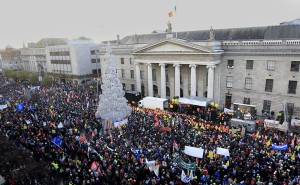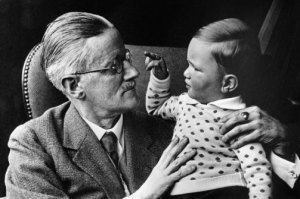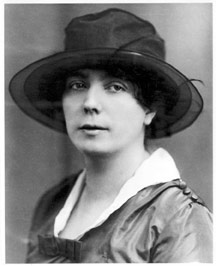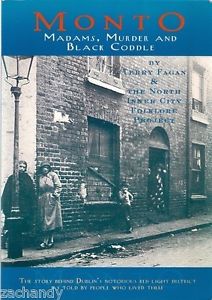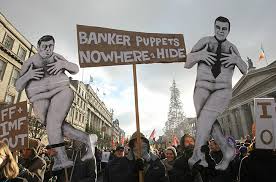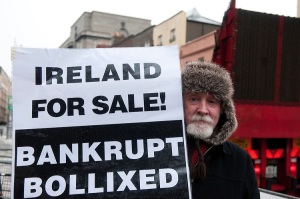MOPE – a Tale of Two Diasporas
This article appeared in Ceylon Today on Thursday April 28 2016
Susan Sontag: Perhaps too much value is assigned to memory, not enough to thinking.
Shedding Blood in Every Generation
Four years ago, I posted a lengthy article on Groundviews which was prompted by a statement in May 2011 by MDMK chief Vaiko in Tamil Nadu. He said that the war for Eelam was not over; Prabhakaran was not dead and would emerge from hiding at the right time. According to Victor Rajakulendran, the LTTE remained a shining example, a “good history,” for all Sri Lankan Tamils to follow. For a very small number of Irish people the leaders of the Easter 1916 Rising remain a shining example. In her new book, The Seven, about the seven members of the Military Council who made the decision to rebel in Dublin, Irish historian Ruth Dudley Edwards, concludes: “By courting death for a cause that had no popular support, were the Seven different to Bobby Sands and his comrades who committed suicide by starvation? Or from the jihadis who these days joyously sacrifice themselves in suicide bombings? They shared a sense of their own absolute moral superiority as well as an ambition to achieve some kind of immortality”.
Choosing Martyrdom
Ruth Dudley Edwards quotes words of Yeats written in 1939:
Some had no thought of victory
But had gone out to die
That Ireland’s mind might be greater,
Her heart mount up on high;
And yet who knows what’s yet to come?
For Patrick Pearse had said
That in every generation
Must Ireland’s blood be shed.
In my Groundviews article, I asked: “Did Prabhakaran ever ask those who are shown in the horrific Channel 4 images if they wanted to be martyrs? Was there a referendum on martyrdom, a focus group?”
Unhappy Land of Heroes
Liam Kennedy, Emeritus Professor of Economic History at Queen’s University, Belfast, recently published a collection of essays entitled Unhappy the Land. That phrase comes from Bertolt Brecht: “Unhappy the land that is in need of heroes”. The subtitle to Professor Kennedy’s book is The Most Oppressed People Ever, the Irish? The acronym MOPE has been used a lot since Kennedy first introduced it in what Ruth Dudley Edwards called “a good essay at the very end of a book containing lots of boring economic history”. Professor Kennedy writes: “It is hard to overestimate the role of self-delusion in in Irish history, whether as a force animating colonial ‘reformers’ in the seventeenth century or Sinn Fein activists in the twentieth”. Self-delusion is not confined to the Irish.
Unhappy Land?
Did Ireland suffer from exceptional disadvantages? Kennedy thinks not “…the island of Ireland, when viewed comparatively, was favourably circumstanced in terms of soil, climate and biological conditions”. Professor Kennedy contends that no major war was fought on Irish soil after the seventeenth century. With the exceptions of Switzerland and Iceland, “it is difficult to think of any major European society which has enjoyed the degree of isolation Ireland enjoyed from the immediate depredations of war”. During the last three centuries, there have been no major invasions of Ireland. Unlike most Europeans, the Irish have never experienced military conscription. “During the most brutal century that Europe has ever known – the twentieth- Ireland escaped relatively unscathed”.
Some might point out the number of Irishmen who perished in the First World War. About 210,000 Irishmen, all volunteers, served in the British forces during World War One and 35,000 of them died. Others might draw attention to the deformation to the Irish psyche caused by being next door to England and being subsumed into the oppressive British Empire.
A Happy Land?
As an economic historian, Professor Kennedy confidently states that Ireland was among the fastest growing economies in Europe at the time of the Easter Rising. Apart from slow growth in particular sub-periods such as 1932-38 and 1951-59, “Over the twentieth century as a whole, the growth performance of the Irish economy has been close to the western European average and well ahead of eastern Europe. The Irish Republic and Northern Ireland today rank among the richest regions in the world in terms of income per head”.
Professor Kennedy also challenges received wisdom that the introduction of the Penal Laws at the end of the seventeenth century repressed the religious rights of the majority Catholic population of Ireland. Kennedy contends that after 1715, the Penal Laws were fiercer on the statute book than in practice. By the 1790s, Catholics and dissenters in Ireland enjoyed freedom of worship, Catholic churches and dissenters’ chapels dotted the Irish countryside and a state-subsidised national seminary for Catholic priests was founded at Maynooth. At the same time, there was vigorous persecution of religious dissent on the European mainland.
The nineteenth century saw the uninterrupted progress of the Catholic Church in Ireland as it developed a vast infrastructure of churches, presbyteries, convents, monasteries, bishops’ palaces. Perhaps most important was clerical control of the school system with funding from the British state. Clerical education and clerical appointments were free of state control. As a child, I used to enjoy the rousing hymn Faith of our Fathers. Whatever the words of that hymn might claim, Irish people, from the 1740s, were able to worship without fear of “dungeon, fire and sword”. Kennedy says that at a deep level “there was the image-world of Christianity and its symbolic representation of pain, sorrow and exile – universals of the human predicament – which could be exploited selectively to colour the Irish collective experience”. Patrick Pearse was a master of this. After Ireland became independent the church’s power reached totalitarian proportions.
Diaspora
Emigration has been seen as a downside, a drain on the economy, depriving the nation of its bright ambitious young. Professor Kennedy sees a positive side. The Irish have unlimited freedom of exit and have enjoyed privileged access to two of the highest-wage economies in the world – North America and Britain.
Large-scale emigration began after the Famine and it did not take long for the victims to become victimisers. The New York riots of 1863 (as featured in Scorsese’s film The Gangs of New York) were called the Draft Riots because of protests against conscription into the Union army in the Civil War. In fact, they were race riots carried out by Irish immigrants, the children of the Famine, who feared competition in the labour market from emancipated black slaves. At least 119 were killed in an orgy of lynching and arson.
One of the Seven, Tom Clarke, lived in America and revelled in the atmosphere of grievance and heroic struggle that Irish Americans propagated. He expressed a virulent hatred for blacks. As Ruth Dudley Edwards puts it: “Irish Americans would take the narrative of exceptional Irish victimhood to extreme levels of narcissism, self-pity and absurdity and feed it back to republicans in Ireland in what became a malign circle”.
The Politics of Grievance
Sound familiar? In the same way, genuine grievances of Tamils living in in Sri Lanka get subsumed in the exaggerated claims of genocide uttered by sections of the Tamil diaspora.
Professor Kennedy does not deny that Ireland suffered injustice. “It would be an act of denial… to fail to acknowledge that Irish history is replete with instances of persecution, of evictions, of famines. These form part of a European historical experience that was, time out of mind, brutal, bloody and oppressive. One does not have to go all the way with Hobbes to conclude: the past is not a pleasant place”.
However, he sees the ever-present danger of keeping historical resentments alive. “The library of past and present wrongs, including those of an economic nature, were articulated in a continuous present tense that seemed to give historical depth and legitimacy to newly-minted notions of nationalism”.
Bosnia provides a warning. The horrors of the 1990s came “out of a hate-filled history of victimhood. The sadism of the moment was clouded by the rhetoric of the centuries”. Let us not dwell on self-delusion about “800 years of oppression” or deal with perceived grievance by more bloodshed.
















